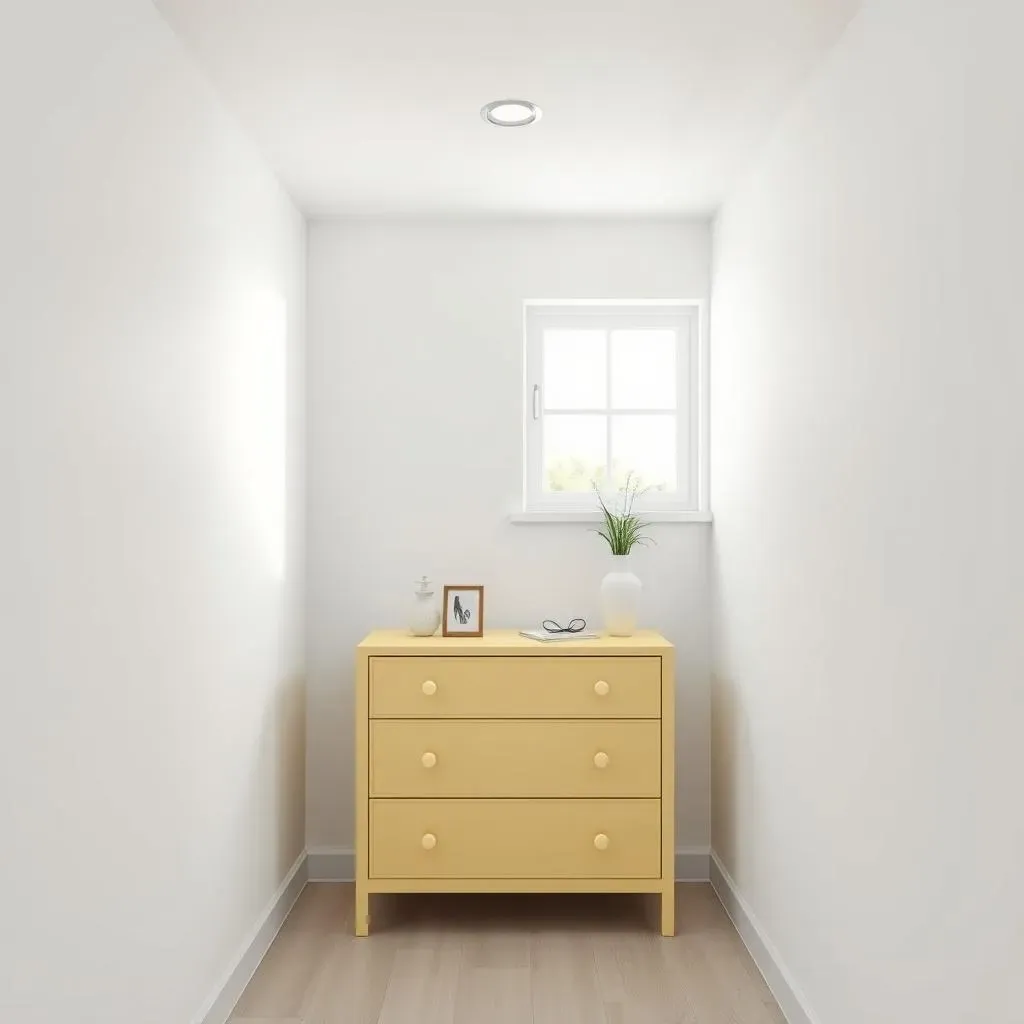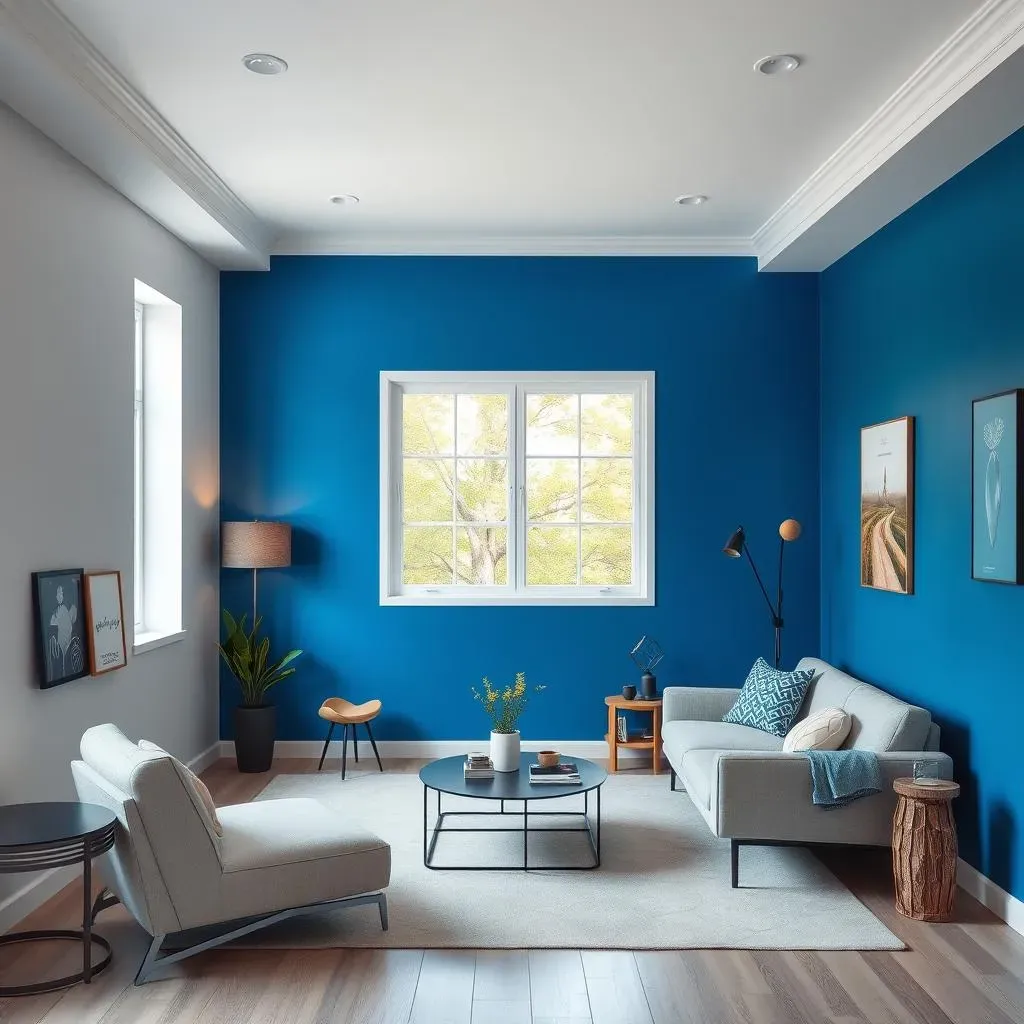Table of Contents
Feeling cramped in your small room? Don't let limited space limit your style! This article is your guide to unlocking the transformative power of paint. We'll explore the best accent wall paint colors for small rooms, revealing how strategic color choices can dramatically enhance your space. Get ready to ditch the feeling of confinement and embrace a brighter, more spacious feel. We'll walk you through selecting the perfect hues, discovering inspiring color palettes, and learning clever techniques to make the most of your square footage. Whether you prefer bold statements or subtle elegance, we’ve got the expert advice and stunning visuals to help you create the small room of your dreams. Prepare to be amazed by how much a single accent wall can change everything! Let's dive into the world of color and discover the best accent wall paint colors for small rooms that will make your space shine.
Choosing the Best Accent Wall Paint Colors for Small Rooms

Choosing the Best Accent Wall Paint Colors for Small Rooms
Light and Bright: Expanding Your Space with Color
When choosing accent wall paint colors for small rooms, lighter shades are your best friends. Think airy pastels, soft whites, or subtle neutrals. These hues reflect light, making the room feel instantly larger and more open. Imagine a tiny bedroom transformed with a pale, sunny yellow accent wall – it instantly feels brighter and more welcoming. Don't be afraid to experiment with different shades of white; a warm white can create a cozy atmosphere, while a cool white can feel modern and crisp. For a touch of personality without overwhelming the space, consider a delicate pastel like soft mint green or lavender.
Remember, the goal is to create a sense of spaciousness. Avoid dark or heavily saturated colors on your accent wall, as these can make the room feel smaller and more closed in. If you're unsure which shade will work best, grab some paint samples and test them out in your room at different times of day. See how the light interacts with the color, and observe how it affects the overall mood of the space. This simple step will ensure you choose a color that truly complements your room.
- Soft whites
- Pale yellows
- Delicate pastels
Strategic Color Choices: Enhancing Depth and Interest
While light colors are great for maximizing space, don't be afraid to add a touch of personality with a bolder color. A subtle accent wall can add depth and visual interest to a small room without making it feel cramped. Think about using a slightly deeper shade of the same color family as your main wall color. For example, if your walls are a light gray, consider a darker gray for your accent wall. This creates a sense of sophistication and dimension without overwhelming the space. Or, if you have a neutral base, you could add a pop of color on one wall using a color from a color palette that complements gray or another neutral.
Another approach is to use color to highlight a specific architectural feature. Perhaps you have a fireplace, a built-in bookcase, or an interesting window. Painting this feature a slightly different color can draw attention to it and create a focal point in the room. This technique is particularly effective in small rooms, where you want to create a sense of visual interest without cluttering the space. Need more ideas? Check out these bedroom accent wall ideas for inspiration. Remember, the right accent wall can transform a small room from bland to grand!
Wall Color | Accent Wall Color |
|---|---|
Light Gray | Darker Gray |
Beige | Warm Brown |
White | Soft Blue |
Small Room Makeovers: Accent Wall Ideas and Color Schemes
Geometric Wonders: Adding Pattern and Playfulness
Let's talk patterns! Geometric designs are a fantastic way to add visual interest to a small room without overwhelming it. Think subtle stripes, simple chevrons, or even a sophisticated herringbone pattern. A geometric accent wall can add a modern touch or a touch of retro charm, depending on your style. The key is to keep the scale of the pattern relatively small, so it doesn't visually shrink the space. For instance, thin stripes can create the illusion of height, while small-scale geometric patterns add texture without being overpowering. If you're feeling bold, try a contrasting color scheme! A dark accent wall with a light geometric pattern can be surprisingly effective. Need some inspiration? Check out these geometric accent wall ideas to get your creative juices flowing!
Remember, the right pattern can completely change the feel of a room. A playful pattern can add energy and fun, while a more subtle pattern can create a sophisticated and calming atmosphere. Before you commit to a specific pattern, try visualizing it on your wall using painter's tape or a digital design tool. This will help you determine whether the scale and style of the pattern are right for your space. Looking for more ideas on how to use color to bring out the best in your rooms? Explore these bedroom accent wall ideas for extra inspiration.
- Subtle stripes
- Small-scale geometric patterns
- Chevron or herringbone designs
Nature's Hues: Bringing the Outdoors In
Embrace nature's palette! Earthy tones like soft greens, warm browns, and muted blues can create a calming and inviting atmosphere in any small room. Think of a tranquil bedroom with an accent wall in a soft sage green – it instantly feels more relaxed and connected to the natural world. These colors work particularly well with natural materials like wood and plants, adding a sense of warmth and serenity to the space. Consider using different shades of the same color family to create depth and dimension. For example, you might pair a light green accent wall with darker green furniture or accessories. This creates a cohesive and sophisticated look without making the room feel cluttered.
Don't be afraid to experiment with textures as well! A textured accent wall can add another layer of visual interest and depth to your space. Consider a faux finish like stucco or a textured wallpaper. If you choose a textured wall, select a lighter color to avoid making the room feel too heavy. Need help choosing colors that work well together? Check out these ideas for accent wall paint colors that go with green or other nature-inspired shades. Remember, the goal is to create a space that feels both stylish and inviting.
Color Family | Accent Wall Color Idea |
|---|---|
Greens | Sage Green, Olive Green |
Blues | Soft Aqua, Dusty Blue |
Browns | Taupe, Mocha |
Maximize Your Space: Tips and Tricks for Using Accent Wall Paint Colors in Small Rooms
Light and Bright: The Illusion of Space
Believe it or not, the right paint color can trick the eye into thinking a room is bigger than it actually is! Lighter shades are your secret weapon here. They reflect light, making the room feel open and airy. Think soft whites, pale pastels, or even a very light gray. Avoid anything too dark or bold, as those colors tend to absorb light and make a room feel smaller and more closed in. A light and airy accent wall can work wonders in a small bedroom or even a cramped kitchen. Imagine a tiny living room transformed by a pale blue accent wall – it immediately feels more spacious and inviting.
Don't forget about the ceiling! Painting the ceiling a slightly lighter shade than your walls can create a sense of height. This is a simple trick that can make a huge difference in a small room with low ceilings. Think of it as adding some extra "headroom" visually. Want more ideas on brightening up small spaces? Check out these tips for light accent wall paint colors.
- Soft whites and creams
- Light grays and beiges
- Pale blues and greens
Strategic Placement: Highlighting Key Features
Instead of painting an entire wall, consider focusing on a specific area. Highlighting a focal point, like a fireplace or a built-in shelf, with a contrasting color can draw the eye and create a sense of depth. This is a great way to add visual interest without overwhelming a small room. For example, a bold accent color around a fireplace can create a cozy and inviting atmosphere, while a lighter color on a built-in bookshelf can make the space feel more open. This technique works best when you choose a color that complements the overall design scheme of the room.
Another clever trick is to use a lighter color on the wall opposite your main light source. This will help to reflect light deeper into the room, enhancing the feeling of spaciousness. This is especially effective in rooms with limited natural light. For example, in a north-facing room, you might choose a light and airy color for the wall opposite the window. For even more inspiration on optimizing your space, explore these ideas for small rooms. Remember, a little creativity goes a long way!
Focal Point | Accent Color Suggestion |
|---|---|
Fireplace | Warm Gray, Deep Blue |
Bookshelves | Light Yellow, Soft Green |
Window | Off-White, Pale Pink |
